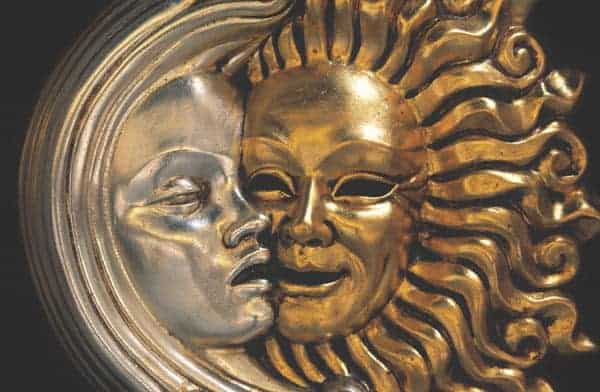The Sun and Moon Corrupted
Philip Ball
2008 Portobello
£10.99/$21.71 pb 423pp

Most physicists probably realize that their work will not overturn the foundations of science. Some, however, refuse to accept this fate and are convinced that they have discovered how the cosmos really works, even though no one else believes them. Known politely as “cranks” by those who receive their impenetrable but often strangely poetic letters, they operate outside the scientific mainstream. It is one such character — the fictional physicist and Communist Karl Neder — who is at the centre of science writer Philip Ball’s rich and entertaining new novel.
Neder, in common with many of his real-life ilk, has it in for Einstein. He believes passionately that the theories of relativity are wrong and that space–time is, in fact, absolute, and he writes reams of obscure mathematics to show that this is the case. He also claims to have invented that most cherished of maverick devices — a perpetual- motion machine.
Neder’s mission to show the world the error of its scientific ways and to furnish it with unlimited free energy takes place across a changing geographical backdrop, from his youth in postwar and revolutionary Hungary, through a stint as a NASA researcher in the US, and then on to a series of frantic wanderings around central and Eastern Europe as a Soviet dissident a few years before the collapse of Communism there.
Running parallel to Neder’s journey is the story of aspiring but directionless journalist Lena Romanowicz. With just one significant article to her name, she spots a story about Neder in her physicist father’s copy of Natural Science magazine and decides to try and write a profile of him for the Observer newspaper. Given that Neder is constantly on the run, Lena has a challenge on her hands trying to track him down. But when she finally does, she finds herself in a desolate, history-making place.
Ball is a freelance science writer and a consultant editor for Nature, and, in addition to his regular stream of articles in the scientific and popular press, he has written a number of non-fiction books. Fiction, however, is something new for him. Among the acknowledgments in The Sun and Moon Corrupted, he says that his wife has “relished watching me leave the comfort zone of non-fiction”, but he certainly appears at home in his new surroundings.
Ball definitely hits the mark when it comes to maverick scientists. His imagined letters from frustrated physicists and would-be physicists — such as one that informs the reader of how to calculate the length of the sky — would seem utterly fanciful were it not for the fact that science magazines and journals receive letters just like them every week.
Neder’s letters show some of the classic traits of the crank — boundless enthusiasm for his work, utter conviction that he is right, and a refusal to accept criticism or rejection; although his threat to burn himself to death in front of the British Embassy in Prague if his papers are not accepted for publication is perhaps further than most real-life eccentrics would be prepared to go. Through the narrative, Ball gives the reader some idea of why mainstream scientists are rightly reluctant to abandon their existing theories in favour of radical new alternatives, but his story suggests that these apparent cranks should not always be dismissed out of hand.
Combining fictional narrative with science, as Ball attempts to do, is not easy. The physics is a bit dense in places and will not be easy going for those without a scientific background. He can also be a bit over descriptive, and the plot sometimes gets lost amid the chunks of science and history. Nevertheless, he succeeds in giving the reader an idea of how science works and what makes scientists tick, while wrapping it all up in an engaging story.
In writing this science adventure story, as well as displaying an impressive knowledge of physics, chemistry, politics and history, Ball also convincingly portrays personal relationships. His portrait of the relationship between Lena and her father, who is the head of physics at the University of Kent, is particularly good. Lena is a “people person” who is somewhat intimidated by science, while her father loves talking about physics, increasingly so on the radio, but is less adept when it comes to family matters. As Lena sees it, he regards people as “a peculiarly complicated class of fundamental particle”.
The rest of the book contains plenty more to entertain the reader. In particular look out for the amusing dialogue between Lena and the mildly lecherous man from the Observer; the portrayal of the science journalist as outsider; the chaotic scenes from the “International Conference on Space–Time Absoluteness” in Vienna; Lena’s secretive trek across the Transylvanian Alps and Carpathians; betrayal; nuclear weapons; surveillance; and a cameo appearance by Einstein. Then there is the climax, where the title of the book becomes clear. There is certainly plenty to take in, but the book is all the more stimulating for it.



